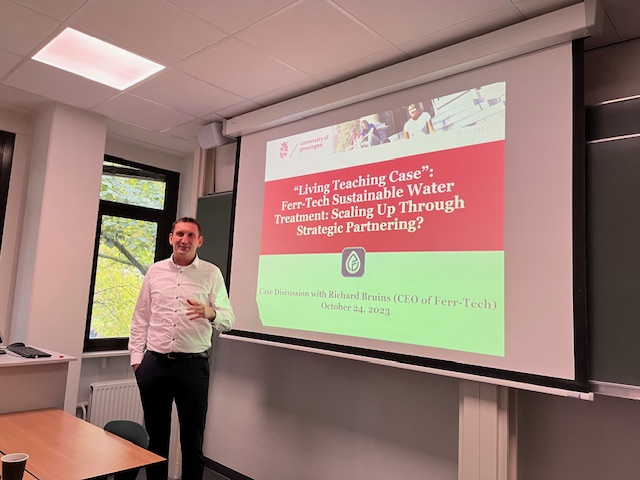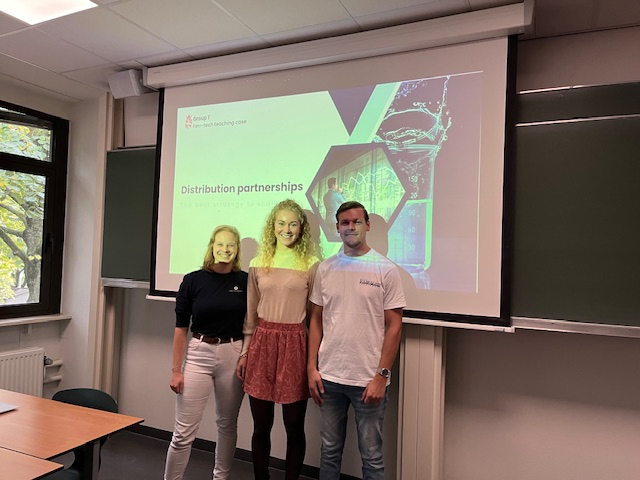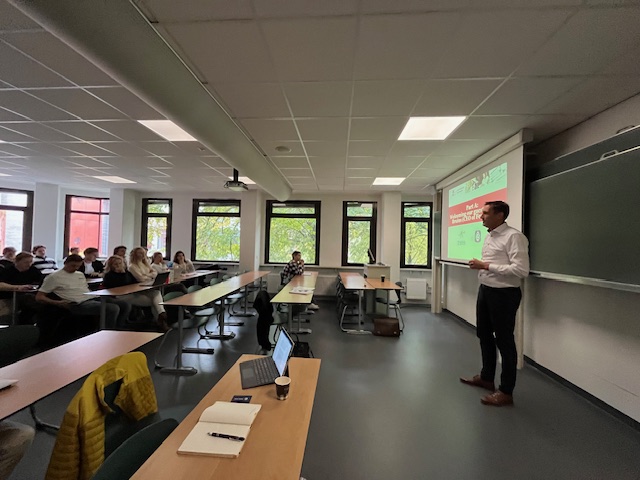Lecturer's blog 17: Enhancing student employability through ‘Living Teaching Cases’ by Evelien Croonen
In my previous Lecturer’s Blog titled ' A little less conversation, a little more action ', I made a call for more active learning by our students through what I refer to as ‘student-practitioner interactions’. In that blog, I distinguished different types of such interactions, such as College Tours or Business Safaris. In this blog, I would like to share my recent experiences with developing and implementing another type of student-practitioner interaction, namely ‘Living Teaching Cases’.

Living Teaching Cases: what are they?
Most lecturers in business and management will be familiar with the Teaching Case Method that is often used in business schools. Using a very broad definition from a book by John Heath (2015[1]), a Teaching Case can be defined as: ‘An account or description of a situation, or a sequence of events, which raises issues or problems for analysis and solution’. Teaching Cases can vary from simple illustrations of situations to ‘decision-based cases’ where students make a problem diagnosis, evaluate solutions, and develop recommendations. In this blog, I focus on decision-based cases since these represent an intensive form of ‘active learning’, and, more specifically, ‘problem-based’ or ‘challenge-based learning’.
The ’Living’ element refers to the fact that local practitioners are involved in the Teaching Case. My own definition of a (decision-based) Living Teaching Case is as follows: ‘A Teaching Case on a real-life challenge/question of an actual practitioner (‘the case protagonist’) where students present their case analysis to this practitioner and engage in an in-class discussion with him/her”.
Living Teaching Cases: what are their benefits?
There is quite some scientific literature on the benefits (and - let’s be fair - some pitfalls) of the Teaching Case Method. My view on the benefits is that Teaching Cases enhance student employability through helping students in:
-
Developing higher-order academic knowledge through its application to complex, real-life events or problems.
-
Developing specific skills, most importantly: critical-thinking, problem-solving, and communication skills.
-
Developing a life-long self-directed, inquisitive, and open-minded attitude.
For Living Teaching Cases I see even more benefits for students because it helps them in:
-
Learning to present their analyses and recommendations to an actual practitioner and receive immediate feedback, leading to a higher intrinsic motivation and a further deepening of abovementioned knowledge, skills and attitudes.
-
Learning about the job market and relevant developments, job opportunities, and internship possibilities.
Living Teaching Cases: a recent experience in the MSc BA SB&E
Given the abovementioned benefits, I introduced a Living Teaching Case in the course Entrepreneurship & Small Business Strategy (a core course in the MSc BA SB&E with 35 students). In the Summer of 2023, I developed such a case in cooperation with a startup company in sustainable water treatment: Ferr-Tech. I worked with Ferr-Tech’s CEO (Richard Bruins) and CMO (Judith le Fèvre) to formulate a central case question and a case description for the students. The result was a 10-page case description on the (short) history of Ferr-Tech, its management, its products and its strategic plans. The central case question focused on how Ferr-Tech should manage the benefits and risks in a specific strategic distribution partnership with a large German company. We also produced a case introduction video (see here) so that students could have a ‘virtual tour’ at Ferr-Tech’s premises and have a broad introduction to the central case question by the case protagonists Richard and Judith.
I presented all the information on the case in the first lecture week, during which students also formed groups of three. In the weeks that followed, the students attended theoretical lecturers on the case topics, so that they became aware of theories and frameworks that are potentially useful for their case analysis. Towards the end of the course, the students handed in their work: a recorded Powerpoint presentation and a brief essay in which they systematically analyzed the case situation and formulated recommendations for Richard and Judith. In the final week, I selected the best student group to present the case analysis and recommendations to Richard. This presentation formed the start of the plenary case discussion with Richard in class.
Living Teaching Cases: tips & tricks for implementation
After my first experience with developing and using a Living Teaching Case, I have learned several lessons.
First, at the program level, I have learned that (Living) Teaching Cases form a potentially valuable method for active learning that can complement other teaching methods to achieve intended program learning outcomes. I would suggest to introduce the Case Method early in programs, starting with descriptive/illustrative cases, going via decision-based ‘non-living’ cases, to decision-based Living Teaching Cases. Students need to practice their case analysis skills before working on a Living Teaching Case, because that increases the quality of the cases analyses and – thereby – the added value for the case protagonists.
Second, developing a Teaching Case is time intensive. For that reason, I made the case description in such a way that it can also be published in an international case database. In this way, other lecturers from all over the world can use the case as a ‘non-living case’. Moreover, this case description enables me to make small yearly adaptations depending on the case protagonists’, the students’ and my own needs (and developments in AI…).
My third and final lesson relates to reflection by the students: make sure that there is room for reflection/debriefing so that students understand how the newly acquired knowledge and skills can be applied in other contexts. This relates to one of the potential pitfalls of Teaching Cases: there is a danger that a case is too particularly linked to a specific context and that students obtain a too simplistic view on the case question at hand. A broader reflection on the case in class is one way to avoid this pitfall.
I am always open to share more experiences, but for now I would like to pass the torch for the next blog to Martijn Keizer from the Department of Marketing. He will focus on the use of AI tools in thesis writing.
[1] For the sake of readability, I have not inserted references to scientific literature in this blog. However, I have delved into scientific studies on the effectiveness of different teaching methods in higher education (as part of my Senior Teaching Qualification). Feel free to contact me if you want to know more about these scientific backgrounds.



